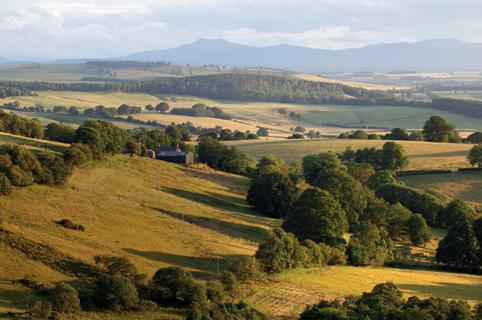
3 minute read
The steps in more detail Step one: identifying opportunities to trade
Step one Identifying opportunities to trade
Any new scheme should begin by identifying the opportunity. This could be initiated from the supply side, for example if a group of farmers already working together is keen to access additional funding; or, from the demand side, if a business or group of businesses is looking for a particular solution or benefit. To determine if an opportunity exists: 1. Assess which businesses or public services in a region are most affected by how a landscape performs, and which landscape assets are involved. Then, any overlap in interests for different businesses or sectors can be identified. 2. Assess what outcomes can be delivered by that landscape. This involves understanding its physical capacity, and the ability of farmers and land managers to enter into agreements and deliver interventions. For example, it should seek to understand the economics of local farms, whether there are existing farmer collaborations and what experience farmers and land managers already have of participating in environmental schemes. The objective at this stage is not to build up a comprehensive plan, but to use existing data, intelligence and insight to identify the most promising place to start a trade.
Advertisement
Tip
The Landscape Enterprise Networks approach developed by 3Keel is a systematic process that can be used to understand which sectors in a region have the most at stake from landscape performance. See: landscapeenterprisenetworks.com

What are the potential landscape outcomes that might provide benefits? This could include flood risk mitigation, water quality, carbon sequestration, biodiversity enhancement, recreation and liveability, and food and fibre production. Once there is a picture of the full range of potential benefits, it will be possible to narrow down the main opportunities.
Where are the real business needs in the local area? Businesses may be able to use the scheme, for instance, to avoid costs, reduce risk exposure, enhance assets they own, improve the health and welfare of employees or achieve corporate commitments to reduce climate impacts. This should be the focus, rather than abstract natural capital valuations.
What is already happening in the local area? There may be opportunities to join up and enhance existing initiatives.
What local resources and public data are available which may help answer these questions, such as local flood risk management strategies, or local catchment plans developed by NGOs like the Rivers Trust? (See annex pages 48-49) for an example of some of the considerations and publicly available data that might be used to assess opportunities on flood and water quality.
What introductory materials might be needed to help engage businesses and farmers and sell the opportunity to them? For many, this will be a new way of doing business and achieving their desired outcomes, so the benefits may not always be immediately obvious to them.
Eden demonstration project The initial opportunity

In our demonstration project, our first trade was initiated from the demand side, with the food company Nestlé and water firm United Utilities. Both have a wide range of interests in outcomes from the land, including water quality and quantity, climate mitigation and adaptation, biodiversity and resilience of food supply. Phosphorus reduction in the Petteril river for United Utilities and resilience of dairy supply for Nestlé are both outcomes that rely on good soil management (amongst other things). Furthermore, a number of farms which supply milk to Nestlé are located in the same area where United Utilities needs to reduce the phosphorus load in rivers. Finally, there were clear opportunities for farmers to work together, including through the dairy co-operative First Milk, and through the Eden Rivers Trust.




